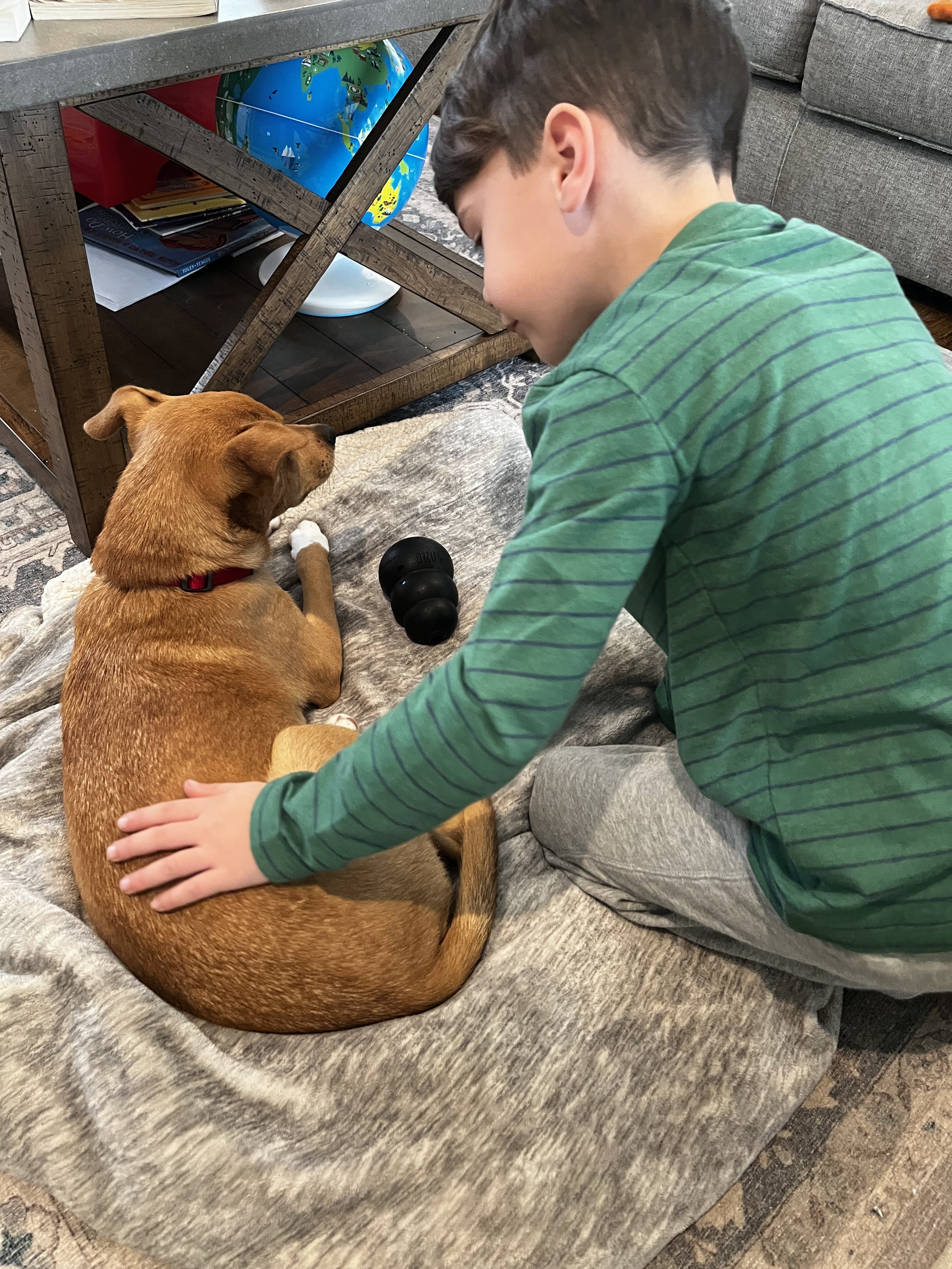How to Help Your Kids Learn that Goodbye is the Goal
Saying goodbye to a foster as an adult is hard, but what about navigating how to explain to your children that they can’t keep a dog forever? I was the parent whose literal job it was to tell people, “Just try fostering! I promise you’ll love it!” but I had never actually done it myself. Our excuse was the popular one–I didn’t think I could ever give it back, I’d fall in love and want to keep it, and how could I make my children understand that this adorable puppy wasn’t ours?
But, when COVID-19 hit in March of 2020 and the rescue I was working for at that time had to immediately place dogs in foster care from the shelter, it was just the push I needed to try fostering. This is not a blog about the technical logistics of fostering (you can find that here), this is more of an emotional guide to help you through the balance of helping your children understand the amazing experience of fostering.
You know your child best, but I find myself not always giving my kids the credit they deserve for their resilience and emotional intelligence. Before we picked up the foster puppy, my husband and I sat our sons down and explained that we were going to be bringing home a dog that was only staying for a little while until she found her forever family. We were going to love her and take good care of her, but after two weeks she’s going to get adopted by someone else. My children are seven years old (yes, they are twins) so you’ll have to tailor the conversation to the age of your child.
For toddlers, it can be as simple as, “You know how sometimes Becky watches you when mommy and daddy go out to dinner? We will be babysitting a puppy here for a little while until they find their parents!”
Elementary aged children would likely need a deeper explanation of fostering. Something like, “Where we live, there are dogs that don’t have a family, and they need somewhere to stay until they can find that family. We are going to try fostering, which means a dog will stay with us for just a little bit until they get adopted by their forever family! It might be hard to say goodbye, because we love dogs, but if you like fostering, we can always do it again!”
Teenagers and up will likely appreciate a straight-forward conversation. “We’re going to try out fostering a dog–they’ll only be with us for a little while but it would be a big help if you were involved in feeding, walking, and training! It might be hard to say goodbye when they get adopted, but we’re here if you want to talk about it.”
My sons still bring up Olga, our first foster, and wonder how she’s doing. They like to talk about funny stories from our fosters, the ones they liked best (this seems to always change), and ask when we can get another puppy. I’m proud to say we’ve fostered five puppies, and while we all get a little sad to see them go, my kids handle it the best. We always take a family photo with the puppy before they go to the adoption event, and I give them ample time to say goodbye that morning. I also show them the adoption photo of the puppy with their new family so they can see how happy the puppy is and how nice their new family looks.
At any age, it’s important to reinforce the ‘temporary’ of it all, and if possible, show them the ‘Happy Tail’ photo as closure. Chances are, your kids will probably handle it better than you! Even if tears are shed (they certainly are in this house from adults and kids), the sadness turns into joy when my children realize our family did something truly life changing for a dog in need. All this to say, push through your nerves and give fostering a try. Your kids might surprise you!
Mallory is the Marketing Director at Muddy Paws Rescue and has 7-year-old identical twin sons who love to foster! Her family has fostered five dogs so far, and the kids are always involved in helping set up for the puppy, playing with them, and helping to teach them manners.








